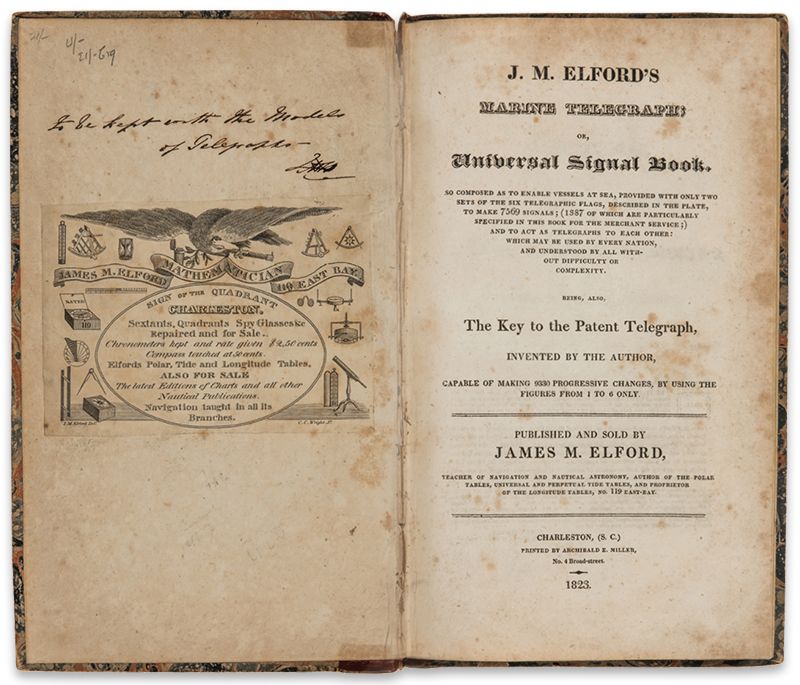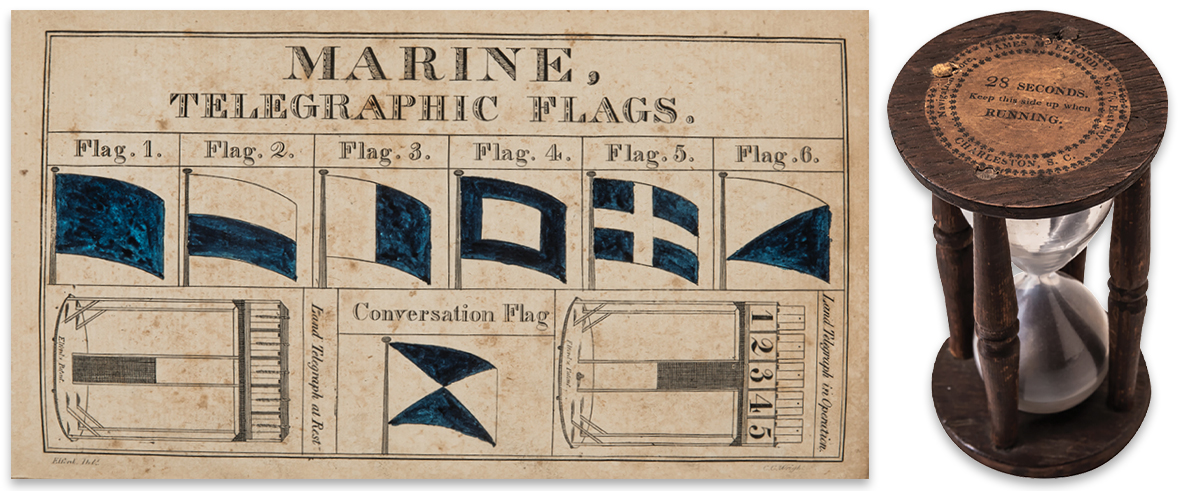The sea captain designed a system of flags to enable ships to communicate

In 1823, James M. Elford published his Universal Signal Book, which illustrated how to display and interpret his patented maritime flag system, enabling sea captains to send 9,324 different messages to communicate with other ships.
While the Internet was not invented in Charleston, one of its forerunners was. Its creator, James M. Elford, immigrated to Charleston from Bristol, England, in the late 1790s, giving up his life as a sea captain to open a store of nautical instruments on East Bay Street. However, Elford never
gave up the sea.
With a keen scientific mind—called a “genius” by the likes of distinguished Unionist James Louis Petigru—Elford developed a way of determining latitude at sea by using the star Polaris. He founded and ran a nautical school in Charleston, mapped the state, and was a member of one of the city’s maritime societies. Dedicated to practical ways of helping those aboard ships, he also invented a system to determine tides in any port of the world. But his most important contribution resulted from his desire to communicate across distances, languages, and cultures.

(Left) James M. Elford's Universal Signal Book illustrated how to display and interpret his patented maritime flag system; (Right) Elford also sold instruments, such as the 28-second hourglass, at his nautical store on East Bay Street.
Vessels passing each other at sea needed to be able to send messages and relay information from the captains to the ports they were approaching. Elford created a universal maritime signal code—a telegraph of sorts that didn’t need a specific language to connect “wirelessly.” All users needed was to be able to see one, or several, specifically designed flags and a code book he wrote to decipher what they meant.
In 1822, he patented his system, capable of sending 9,324 different messages, and published J. M. Elford’s Marine Telegraph, or Universal Signal Book in 1823, used by shipmasters from Scotland to Brazil. Elford died on January 26, 1826, and is buried in St. Michael’s cemetery.
His work was later adopted by the US Revenue Cutter System and US Navy until the late 1840s, when a new system was developed, eclipsing him and hisuniversal code of communicating.